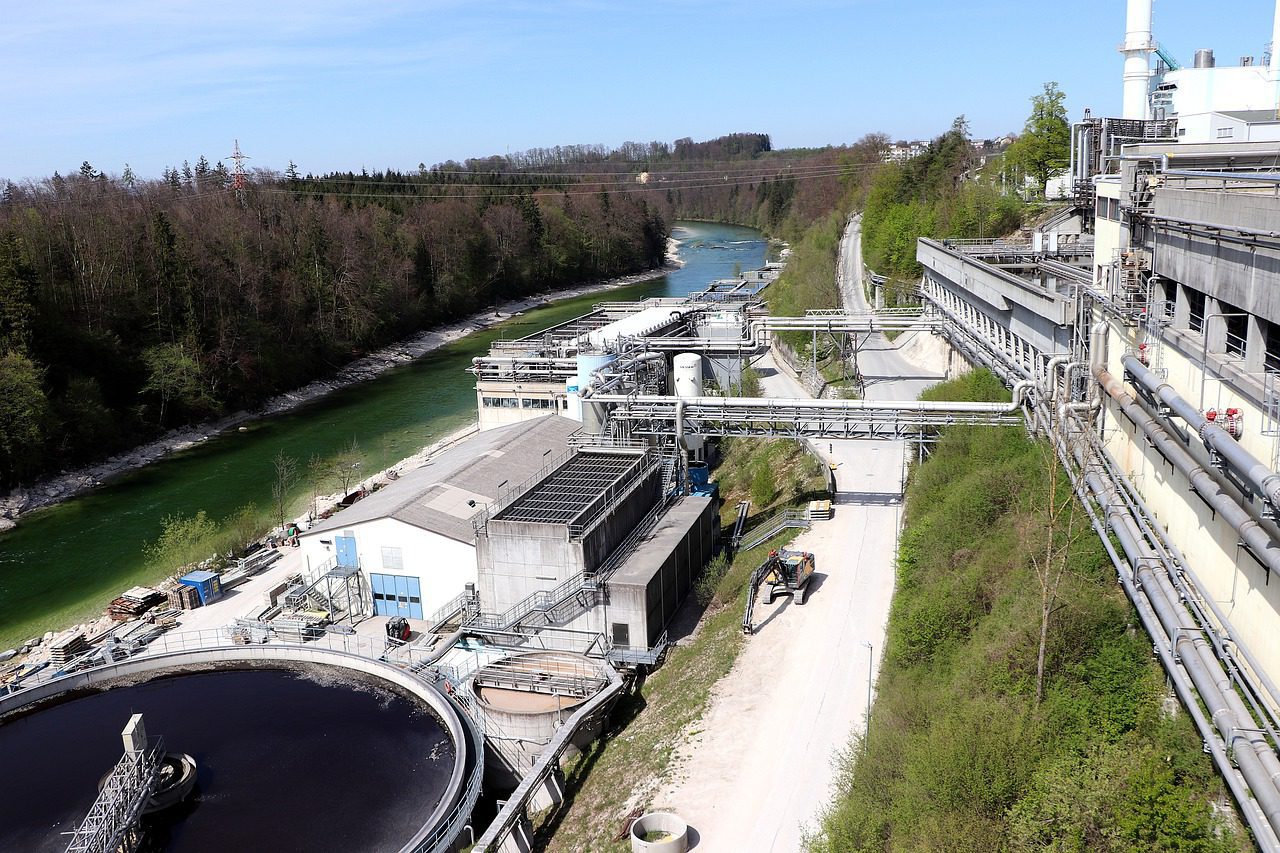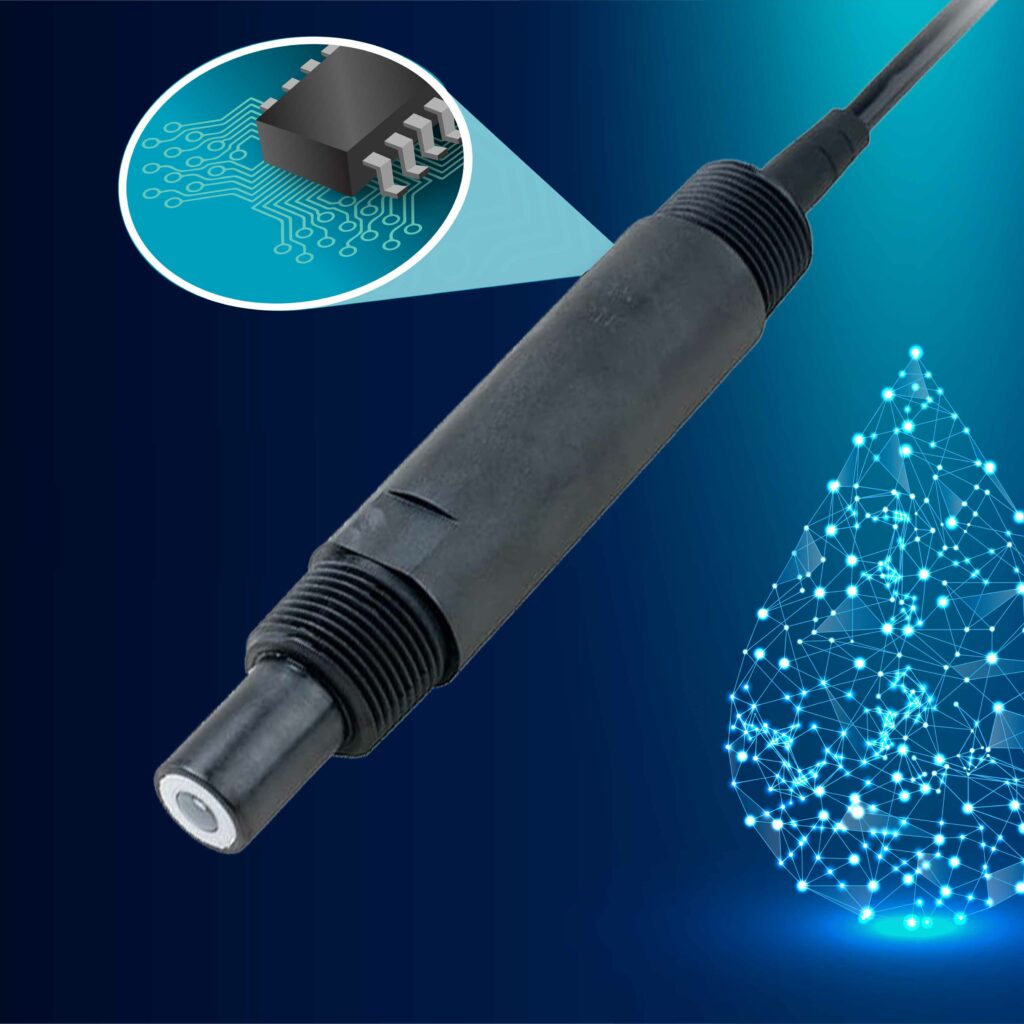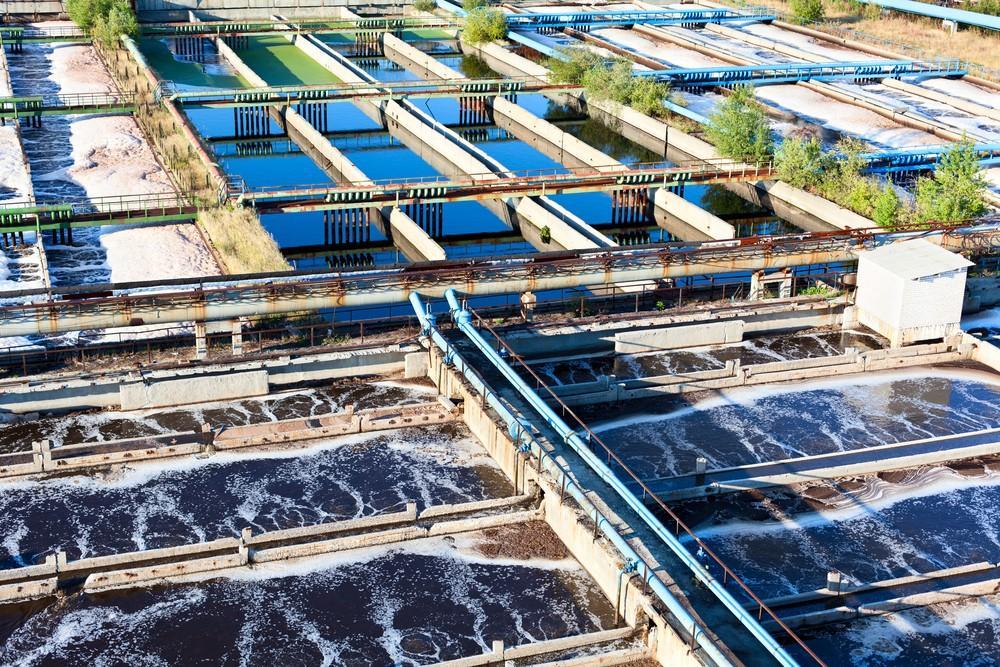09/25/2023 | Industrial Water Treatment | 11 MINUTE READ
Simplifying pH Measurement Using Differential pH Sensors in Wastewater Treatment

Wastewater treatment is an essential process in maintaining environmental health and sustainability. Central to this process is the precise control of pH levels, which can significantly impact the efficiency of wastewater treatment plants. This article delves into the critical role of pH measurement in wastewater treatment and introduces the concept of differential pH sensors as a powerful tool for simplifying this crucial task.
pH in Wastewater Treatment: A Comprehensive Overview
In the realm of wastewater treatment, understanding and controlling pH is of paramount importance. This crucial parameter dictates the effectiveness of the chemical and biological processes that underpin successful wastewater purification. Maintaining an optimal pH range ensures that these processes operate at peak efficiency, thereby guaranteeing comprehensive pollutant removal and safeguarding the health of aquatic ecosystems.
Wastewater treatment plants heavily depend on biological processes, employing microorganisms to break down organic matter. These microorganisms, however, are delicately balanced and susceptible to pH fluctuations. When pH levels veer away from the desired range, the metabolic activities of these microorganisms are disrupted, hindering their ability to effectively decompose organic pollutants. Consequently, incomplete treatment can occur, leaving behind harmful contaminants that can pose significant threats to aquatic life and the overall ecological balance.
The significance of pH control extends beyond the realm of biological processes. Chemical reactions employed in wastewater treatment are also pH-sensitive. For instance, precipitation processes, commonly used to remove heavy metals, are highly dependent on maintaining an appropriate pH range. Deviation from this range can lead to inefficient precipitation, allowing heavy metals to remain in the effluent, potentially contaminating receiving waters and posing risks to aquatic organisms.
In summary, pH plays a pivotal role in wastewater treatment, influencing both biological and chemical processes. Maintaining an optimal pH range is essential for ensuring the effective removal of pollutants and protecting the environment. By carefully monitoring and controlling pH levels, wastewater treatment facilities can safeguard the integrity of aquatic ecosystems and promote a healthier environment.

While pH control is a cornerstone of effective wastewater treatment, its measurement poses a unique set of challenges. Conventional pH measurement techniques often face hurdles such as electrode fouling, drift, and demanding maintenance procedures. These issues can compromise the accuracy of pH readings and escalate operational costs.
Electrode Fouling: Electrode fouling, a common nemesis of pH measurement, occurs when substances in the wastewater adhere to the sensor’s surface, hindering its ability to accurately detect pH levels. This accumulation of contaminants can lead to distorted readings and reduced sensor lifespan. Wastewater treatment plants grapple with a variety of fouling agents, including organic matter, oil and grease, and inorganic precipitates.
Drift: Drift, a gradual shift in the sensor’s output over time, poses another challenge to pH measurement. This phenomenon can be attributed to factors such as aging electrodes, temperature fluctuations, and changes in the composition of the wastewater. Drift can result in inaccurate readings and necessitate frequent recalibration, adding to the burden of maintenance.
Maintenance: The maintenance requirements of traditional pH sensors can be substantial, consuming valuable time and resources. Regular cleaning, calibration, and replacement of electrodes are essential to maintain sensor performance. However, these tasks can be labor-intensive and disruptive to treatment operations.
Impact of Challenges: The challenges of pH measurement can have a significant impact on wastewater treatment operations. Inaccurate pH readings can lead to inefficient treatment processes, resulting in incomplete pollutant removal and potential environmental harm. Moreover, the need for frequent maintenance and sensor replacement can strain operational budgets and divert resources from other critical tasks.
Addressing these challenges requires a combination of technological advancements and operational strategies. The development of fouling-resistant electrodes, adaptive calibration techniques, and remote monitoring systems can significantly reduce the burden of pH measurement. Additionally, implementing preventive maintenance practices and optimizing sensor selection can further enhance the reliability and cost-effectiveness of pH monitoring in wastewater treatment facilities.
Introduction to Differential pH Sensors
Differential pH sensors offer a revolutionary solution to the problems associated with traditional pH measurement techniques. These sensors function differently by measuring the potential difference between two electrodes instead of a single electrode immersed in the sample. This innovative approach brings several benefits, making them an ideal choice for wastewater treatment applications.
Differential pH sensors are equipped with two electrodes: a reference electrode and a measuring electrode. The reference electrode is typically a stable reference solution, while the measuring electrode is sensitive to changes in pH. Differential pH sensors provide highly accurate and stable pH readings by measuring the potential difference between these two electrodes, minimizing the common challenges encountered with traditional sensors.
Advantages of Differential pH Sensors
The advantages offered by differential pH sensors are multifaceted. They excel in addressing the challenges faced in pH measurement for wastewater treatment:
- Accuracy: Differential pH sensors provide precise pH measurements, ensuring that wastewater treatment processes operate within the desired pH range.
- Stability: These sensors are resistant to electrode fouling and drift, reducing the frequency of calibration and maintenance.
- Durability: Designed for harsh industrial environments, differential pH sensors are robust and long-lasting.
- Reduced Maintenance: With fewer maintenance requirements, these sensors contribute to cost savings and operational efficiency.
Applications in Wastewater Treatment
Differential pH sensors find applications across various stages of wastewater treatment, including primary, secondary, and tertiary treatment processes. Their accuracy and stability make them invaluable in monitoring pH levels in influent, effluent, and within biological reactors. Moreover, they are instrumental in optimizing chemical dosing for pH control.
Installation and Calibration: Ensuring Optimal Performance of Differential pH Sensors
The success of differential pH sensors in wastewater treatment hinges on their proper installation and calibration. These critical procedures lay the foundation for accurate and reliable measurements, enabling effective process control and optimal pollutant removal.
Installation: Meticulous installation of differential pH sensors is paramount to prevent potential errors and interference. Adhering strictly to the manufacturer’s guidelines ensures that the sensor is positioned correctly, avoiding exposure to physical damage, electrical interference, or excessive vibration. Improper installation can lead to inaccurate readings, compromised sensor performance, and potential process upsets.
Calibration: Regular calibration using certified buffer solutions is essential to maintain the accuracy of differential pH sensors. This process involves immersing the sensor in solutions of known pH values and adjusting its output accordingly. Calibration ensures that the sensor’s readings align with true pH values, compensating for any drift or aging that may have occurred.
Calibration Frequency: The frequency of calibration depends on several factors, including the stability of the wastewater, the severity of fouling, and the sensor’s specifications. While more frequent calibration provides greater assurance of accuracy, it can also be time-consuming and resource-intensive. Striking a balance between accuracy and practicality is crucial for efficient and cost-effective operation.
Calibration Procedures: Calibration procedures should be carried out with utmost care and precision to ensure the integrity of the sensor’s readings. Proper temperature compensation is essential, as pH measurements are temperature-sensitive. Additionally, the use of high-quality buffer solutions, clean calibration vessels, and standardized procedures is crucial for obtaining accurate and reliable results.
In summary, meticulous installation and regular calibration are the cornerstones of successful differential pH measurement in wastewater treatment. By adhering to strict installation guidelines and employing rigorous calibration procedures, wastewater treatment facilities can ensure that their sensors provide accurate and reliable data, empowering them to optimize treatment processes, protect aquatic ecosystems, and safeguard public health.

Maintenance and Care: Ensuring Long-Term Reliability of Differential pH Sensors
Differential pH sensors play a pivotal role in wastewater treatment, providing essential data for process control and pollutant removal. To maintain their effectiveness and extend their lifespan, a comprehensive maintenance and care strategy is crucial. Regular cleaning, thorough inspections, and adherence to manufacturer’s recommendations are essential components of this strategy, ensuring consistent and reliable pH measurements throughout the sensor’s life cycle.
Electrode fouling, a common nemesis of differential pH sensors, can significantly hinder their performance. This accumulation of contaminants, such as organic matter, oil and grease, and inorganic precipitates, can distort readings and shorten the sensor’s lifespan. Regular cleaning is essential to prevent fouling and maintain sensor accuracy.
The cleaning frequency depends on the specific wastewater composition and the severity of fouling. In general, daily or weekly cleaning is recommended for wastewater with high fouling potential. Cleaning procedures should follow the manufacturer’s guidelines and involve using appropriate cleaning solutions tailored to the type of contaminants present.
Regular inspections are crucial to detect any physical damage that may compromise the sensor’s performance. Damage to the sensor’s body, cable, or electrodes can lead to inaccurate readings and potential process upsets.
Inspections should be conducted visually and involve checking for cracks, cuts, or other deformities. The sensor’s cable should be examined for signs of wear or damage. Additionally, the electrodes should be inspected for any visible damage, such as cracks or coating imperfections.
Each differential pH sensor comes with a manufacturer’s recommended maintenance schedule, detailing specific cleaning procedures, inspection intervals, and calibration frequencies. Following these guidelines ensures that the sensor is maintained in optimal condition, maximizing its lifespan and minimizing the risk of performance issues.
Benefits of Proper Maintenance
A comprehensive maintenance and care strategy for differential pH sensors offers a multitude of benefits, including:
- Extended Sensor Lifespan: Regular cleaning and inspections help prevent damage and premature sensor failure, extending its useful life and reducing replacement costs.
- Consistent Accuracy: Proactive maintenance ensures consistent and reliable pH measurements, enabling effective process control and optimal pollutant removal.
- Reduced Operational Costs: Proper maintenance minimizes the need for corrective actions and emergency repairs, reducing overall operational expenses.
- Enhanced Process Control: Accurate and reliable pH measurements empower wastewater treatment facilities to optimize treatment processes, ensuring compliance with regulatory standards and protecting public health.
The realm of wastewater treatment is poised for a transformative shift as technological advancements revolutionize pH measurement methodologies. Emerging trends in differential pH sensor technology hold immense promise for enhancing process efficiency, simplifying monitoring procedures, and optimizing pollutant removal strategies.
Enhanced Connectivity: The integration of advanced communication protocols into differential pH sensors is paving the way for real-time remote monitoring capabilities. This groundbreaking development empowers wastewater treatment facilities to continuously track pH levels from a centralized location, eliminating the need for frequent on-site visits and enabling prompt identification of potential process deviations.
Remote monitoring systems not only streamline data acquisition but also provide valuable insights into long-term pH trends, facilitating predictive maintenance practices and proactive interventions. This data-driven approach optimizes sensor performance, reduces downtime, and ensures consistent compliance with regulatory standards.
Advanced Materials: The development of novel sensor materials is poised to revolutionize the durability and reliability of differential pH sensors. Researchers are exploring the potential of nanotechnology and advanced composites to create sensors that are resistant to fouling, corrosion, and harsh environmental conditions.
These advancements promise to extend sensor lifespans, minimize maintenance requirements, and enhance sensor accuracy in challenging wastewater environments. The ability to withstand harsh conditions will significantly reduce operational costs and improve the efficiency of wastewater treatment processes.
AI-Powered Analytics: Artificial intelligence (AI) is poised to transform pH measurement by introducing intelligent data analysis capabilities. AI algorithms can analyze vast amounts of pH data, identifying patterns and correlations that may escape human observation. This enhanced data comprehension can optimize sensor calibration schedules, predict potential sensor failures, and provide real-time insights into process dynamics.
AI-powered analytics will enable wastewater treatment facilities to make data-driven decisions, optimize treatment processes, and achieve higher levels of pollutant removal. The integration of AI into pH measurement systems will undoubtedly revolutionize wastewater treatment practices, leading to improved environmental outcomes and enhanced public health protection.

Conclusion
In conclusion, pH measurement is a critical component of wastewater treatment, impacting these facilities’ efficiency and environmental impact. Differential pH sensors solve the everyday challenges associated with traditional pH measurement methods. Their accuracy, stability, and durability make them ideal for ensuring wastewater treatment processes operate within the desired pH range. By adopting these innovative sensors, wastewater treatment plants can simplify pH measurement, reduce operational costs, and contribute to a cleaner and more sustainable environment.
Posted by Dominic O'Donnell on September 25, 2023
Sensorex is a global leader in the design and manufacture of quality sensors for water quality and process applications. The company offers more than 2000 sensor packages for pH, ORP, conductivity, dissolved oxygen, free chlorine, chlorine dioxide, UV transmittance and other specialty measurements, as well as a full line of sensor accessories and transmitters. Its expert technical support engineers solve analytical sensor challenges with custom designs and off the shelf products.




